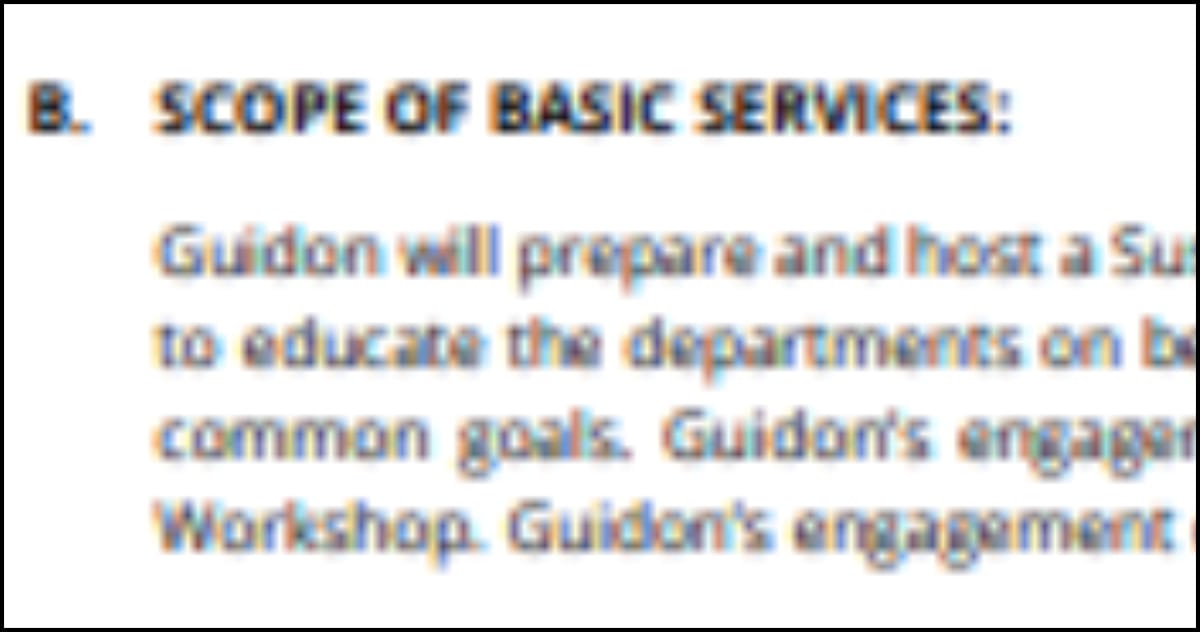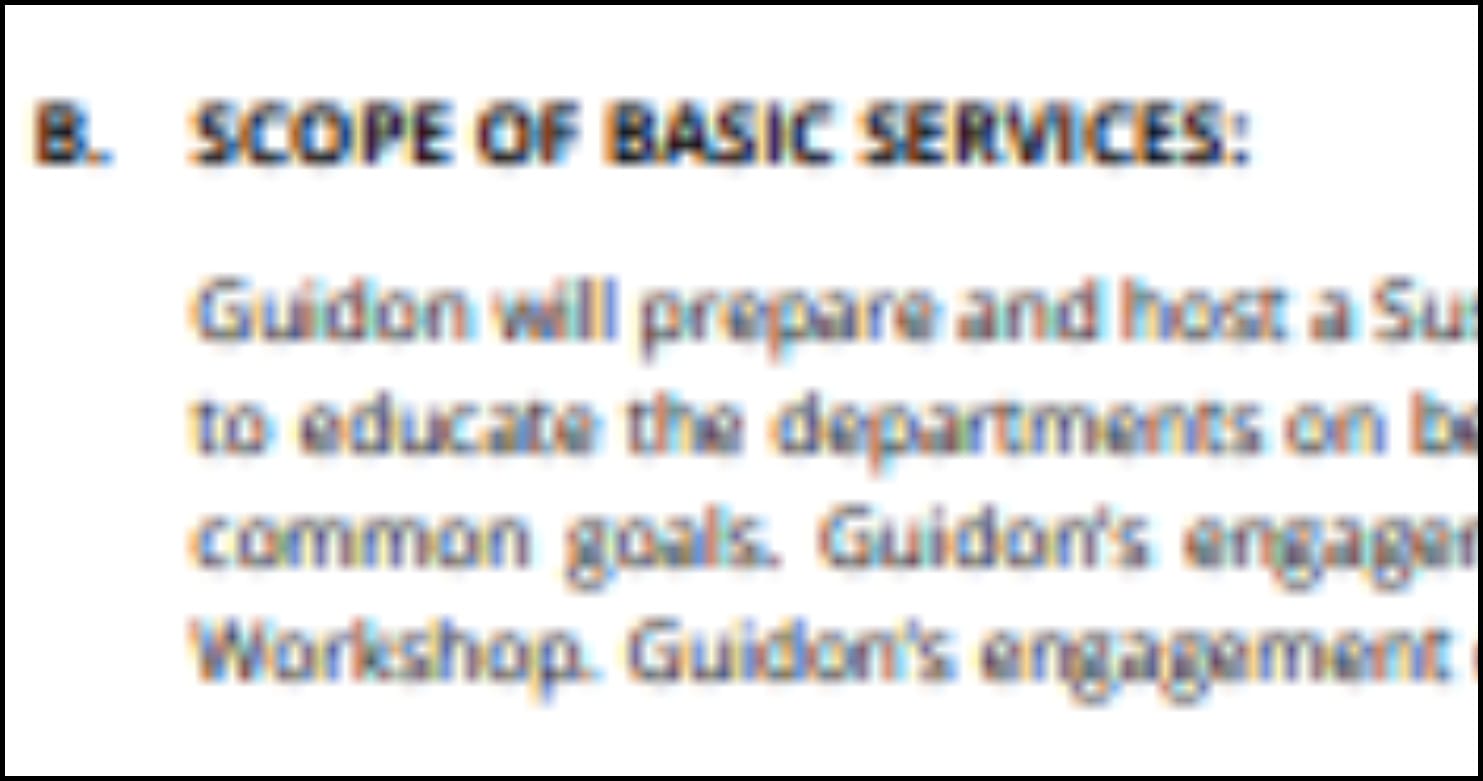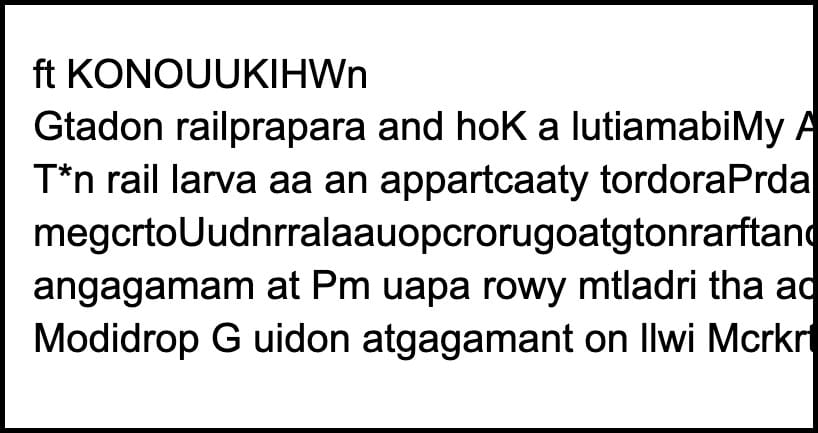Column: Blurry images instead of digital text should not be good enough for Bloomington government



The government of every city in America tries to talk a good game about transparency and accessibility.
Bloomington, Indiana is no different.
But Bloomington fails at basic accessibility just as often as many other cities with way fewer resources.
Today’s example comes from the information packet that has been posted to support the Bloomington redevelopment commission’s Monday (March 7, 2022) meeting.
Background on accessible text
In the .pdf of any public document, the text is supposed to be readable in two ways: by human eyeballs and by machine screen readers. That’s a basic accessibility requirement.
Sometimes the text in a .pdf is “born” digital, which means it’s readable by humans and machines alike from the very start. In other cases, the text is just a picture taken by a scanner, which a machine screen reader cannot decipher as text.
Often, when hand-signed documents are included in a meeting information packet, they are scanned as images, so that the signature can be included. But that often means there’s no digital text layered under the image that a machine screen reader can grab onto and transform into audio for someone who can’t see the text.
If text is presented as just an image, with no digital characters underneath, it also means it’s not possible to copy-paste the text out of the .pdf into another document. That makes it harder for residents to share the information with each other.
If the .pdf includes text as images only, there’s another benefit that is denied to users: the ability to use machine search to find a specific word or phrase in the document.
Problems with RDC’s meeting packet
The Bloomington redevelopment commission’s (RDC’s) meeting information packet for March 7, as originally posted, includes a contract with Guidon Design for $12,482.
In connection with the redevelopment of the former IU Health hospital site, Guidon is supposed to “evaluate potential sustainability goals and analyze the financial impacts on the City of Bloomington and developers based on adoptions of specific sustainability strategies.”
What exactly is Guidon supposed to do? That’s described in the scope of work, which is included in the packet.
But the scope of work is just a scan—an image with no layer of digital text under it. Many modern scanners have built-in OCR (optical character recognition), which means the digital text layer can be added as a part of the scanning process. That does not appear to have happened for Guidon’s scope of work.
That’s bad. But it gets worse. The resolution of the scan in the RDC packet is so bad—it’s too blurry—that the OCR software normally used by The B Square wasn’t able to make heads or tails of it. Here’s an excerpt of what it delivered for the Guidon scope of work:
ft KONOUUKIHWn
Gtadon railprapara and hoK a lutiamabiMy Alpnmant ttrortifcop MPr P r rp u t of ttta Oty T*n rail larva aa an appartcaaty tordoraPrdaparunamonbaupraam megcrtoUudnrralaauopcrorugoatgtonrarftandbraidafoundationof common goad Gutdorrr angagamam at Pm uapa rowy mtladri tha acttittri rurroondrng thr Vouanabary Algnmant Modidrop G uidon atgagamant on llwi Mcrkrtrop can ba brokan n o tfwar pdratat
Sometimes, when you bellyache into the Twitterverse about an issue, you’ll get a tip from an acquaintance from long ago in another place, about some fancy new technology.
It turns out that Google Pinpoint will do a better, but not perfect job of recognizing the blurry text:
SCOPE OF BASIC SERVICES :
Guidon will prepare and host a Sustainability Alignment Workshop , with the input of the City . This will serve as an opportunity to educate the departments on best practices using case studies options going forward , and build a foundation of common goals . Guidon’s engagement at this stage soley includes the activities surrounding the Sustainability Alignment Workshop . Guidons engagement on this Workshop can be broken into three phases
Here’s a link to the Google Pinpoint version of the document: Google Pinpoint RDC meeting packet. That version of the document seems like it has some limitations—it does not appear possible to search for the OCR-ed text in the document or to export the .pdf in its OCR-ed form.
In any case, no resident of Bloomington should have to worry about any of these OCR technology issues.
It should not be acceptable that any part of a meeting information packet gets posted without making all the text accessible. It’s not OK for even a couple of pages to be left as images.
The meeting information packets for all organs of Bloomington government, including the city council, should be posted with all the text accessible. Period.
By the time the Bloomington RDC meets on Monday night at 5 p.m., I hope that the meeting information packet has been revised to make all the text accessible.
Here’s where to check for yourself: RDC meeting information packet as hosted by city of Bloomington.




Comments ()